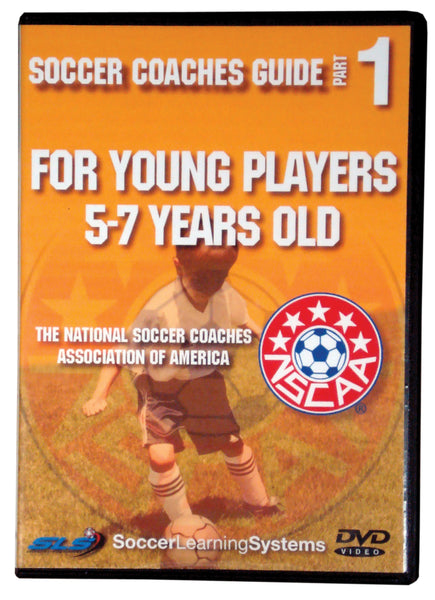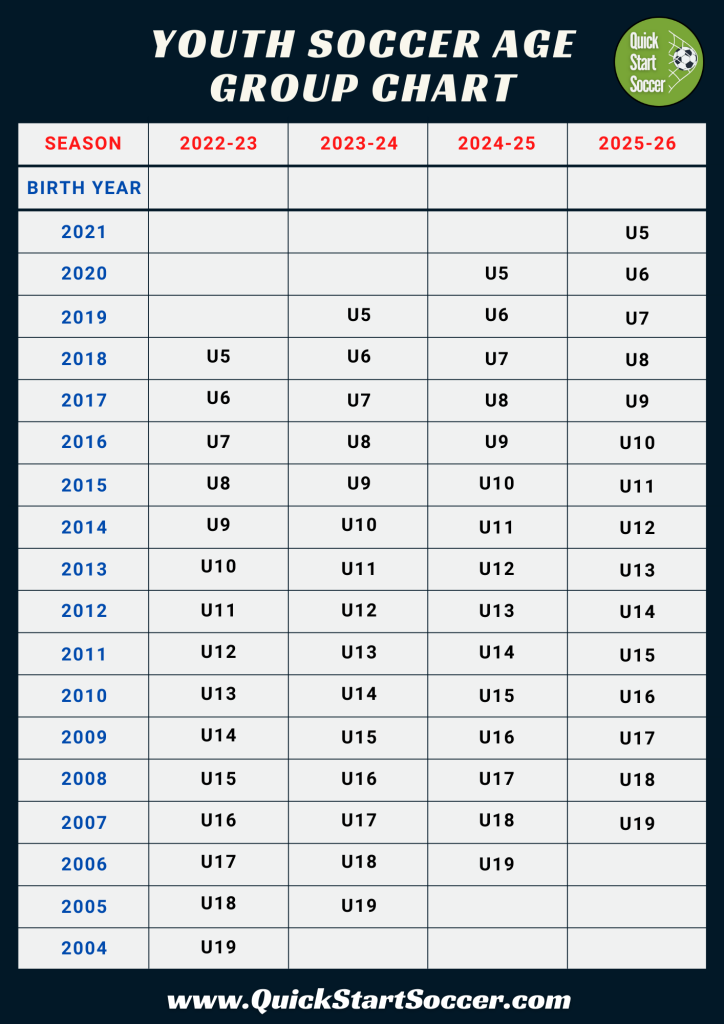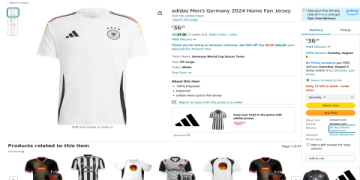# Introduction
YOUTH SOCCER AGE GROUPS can be a confusing topic for many parents, coaches, and even the players themselves. If you’ve ever wondered which category your child belongs in, you’re not alone. Navigating the world of youth soccer is crucial for young athletes’ development and fair play. In this guide, we’ll break down everything you need to know, backed by real data and expert insight.
# What Are Youth Soccer Age Groups?
YOUTH SOCCER AGE GROUPS refer to how soccer organizations divide young players based on their birth year or age. The purpose? To ensure fair competition and appropriate skill development.
Usually, these groups are formed as Under (U) categories like U6, U8, U10, U12, and so on. For example, a player in the U8 group is typically “under 8 years old” as of a set date—usually the start of the season.
This structure helps organizations manage hundreds of players, make scheduling easier, and meet league regulations.
# Why Is Age Grouping So Important?
AGE GROUPING is not just about paperwork—it directly impacts safety, competitiveness, and growth.
– Skill Development: Kids learn best when competing against peers.
– Safety: Matching by age helps prevent injuries from size or maturity differences.

– Pathway: Age groups provide a clear progression, from foundational skill-building to competitive play.
According to US Youth Soccer, there were over 3 million registered players in 2023, with age grouping cited as a major factor in retention and enjoyment rates (来源: [US Youth Soccer National Report 2023]).
# How Does Youth Soccer Age Grouping Work?
The key to this system is the “birth year registration” model. After some confusion in the past, most U.S. leagues now use calendar birth years instead of August 1 cutoff dates.
Here’s a step-by-step guide to determining your child’s YOUTH SOCCER AGE GROUP:
1. Find your child’s birth year.
2. Check the age chart released by your local soccer league or governing body.
3. Match the birth year to the designated “Under” category (e.g., U10).
4. Register your child for that group during sign-up.
5. Confirm placement with league officials, especially if your child is close to a cutoff date.
This method brings more transparency and minimizes disputes.
# Comparison Table of Major Age Grouping Systems
| System | Grouping Rule | Pros | Cons |
|---|---|---|---|
| Calendar Year (U.S.) | Birth year as key cutoff | Consistent and easy to verify | Some kids switched groups after changes in 2016 |
| School Year (UK) | School grade as cutoff | Familiar for parents and matches academic structure | Age gaps within a classroom group |
# LSIs: Related Keywords That Matter
When discussing YOUTH SOCCER AGE GROUPS, you’ll often come across terms like:
– Soccer age chart
– Youth league divisions
– Player eligibility
– Development stages
– Age group cutoff
These reflect the broader search intent: information gathering and practical application for parents, players, and coaches.
# Common Mistakes and Cautions
Let’s be real, plenty of parents get confused or frustrated by age groups.
Here’s an IMPORTANT WARNING: Never assume your child’s group just by grade or friends’ placement. Always check the official age chart for your league.
Another major mistake is pushing kids into higher groups too early. While it might seem good for “challenge,” research shows most young players benefit more from strong fundamentals at age-appropriate levels (来源: [Aspen Institute Project Play 2022]).
# Step-by-Step Guide: How to Find Your Child’s Soccer Age Group
1. Collect your child’s official birth certificate or ID.
2. Locate your local soccer league’s current age chart—usually on their website.
3. Find the current playing season’s “Under” category—e.g., if the season is 2024-25, look for U10, U12, etc.
4. Match your child’s birth year to the chart.
5. Contact the registrar for confirmation, especially if dealing with exceptions (late birthday, relocation).
# Real-World Scenario: How Our Team Handled Age Group Changes
According to my experience as part of our youth soccer program, the switch to birth year registration a few years ago confused many families. We hosted town hall meetings and provided printed charts to clear things up. Once everyone understood the process, parents felt more confident, and player participation increased. The key was communication and transparency.
# Progression Pathway: What Happens Next?
After the initial placement, young athletes typically move up one group each season. This linear pathway allows consistent skill advancement.
Some leagues offer “playing up” options for advanced players, but these must be handled with care. Emotional maturity and physical development are just as critical as technical skill.
# Youth Soccer Age Groups Around the World
Different countries manage YOUTH SOCCER AGE GROUPS in various ways:
– U.S.: Focuses on birth year cutoffs.
– UK: Uses school year cutoffs.
– Australia: Mix of both systems.
For example, in the UK, kids born between September and August compete together, reflecting academic years. Meanwhile, in the U.S., January 1 forms the cutoff.
# FAQ About Youth Soccer Age Groups
WHY CAN’T MY CHILD PLAY IN AN OLDER GROUP?
Mainly for safety and fair play. Exceptions might be made for highly talented players, but it’s crucial to consult league officials.
WHAT IF MY CHILD’S BIRTHDAY IS ON THE CUTOFF DATE?
Always ask your league’s registrar for clarification, as some regions bend the rules for development purposes.
# Conclusion
Understanding YOUTH SOCCER AGE GROUPS is crucial for every parent and coach. Not only does it ensure fair competition, but it also fosters the personal development of every young player.
# Youth Soccer Age Groups Checklist
– Confirm your child’s birth year using official documentation

– Download the latest age group chart from your league’s website
– Register using the correct age division during sign-ups
– Double-check placement if close to cutoff dates
– Attend league meetings for clarifications on rules
– Avoid pushing your child into older groups without thorough evaluation
– Monitor official updates on age group policies
– Stay engaged with your child’s coach regarding skill progression
– Encourage enjoyment and good sportsmanship above all
Ready to navigate youth soccer age groups with confidence? Use this guide, and watch your young player thrive!
















